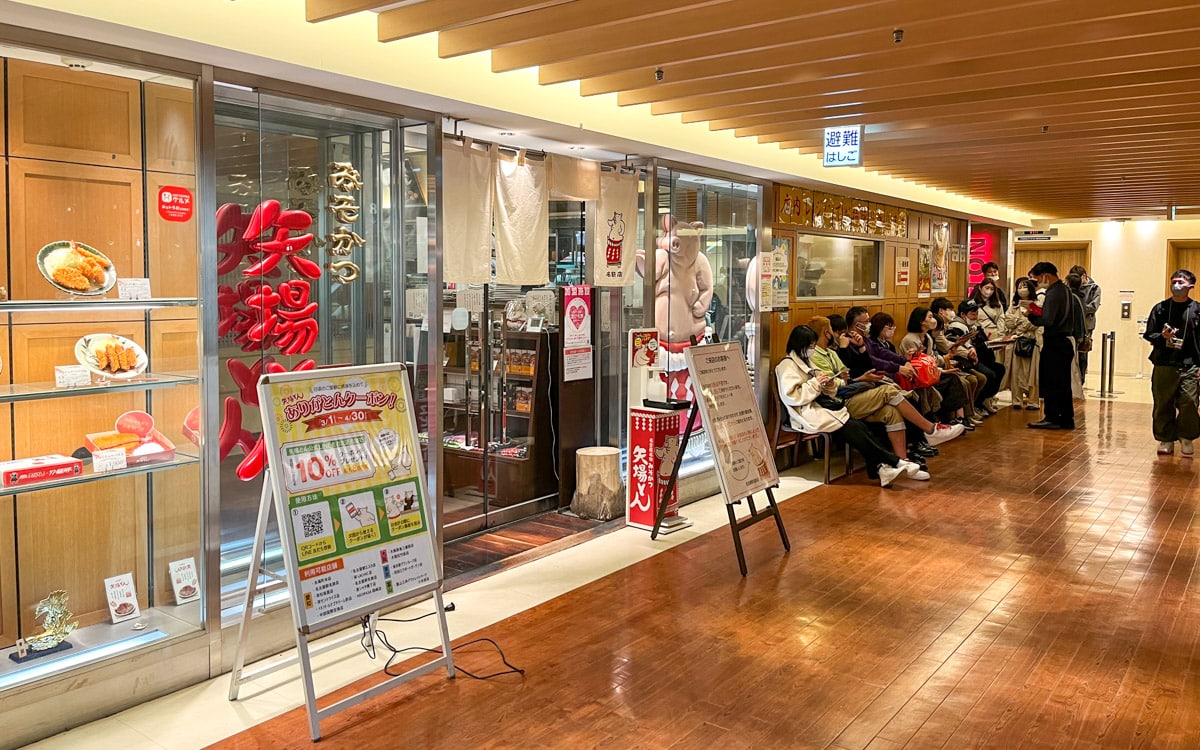
If you’re a fan of Japanese cuisine, you’re likely familiar with tonkatsu, a flavorful dish consisting of breaded and deep-fried pork loin or fillet. It is one of my favorite foods to eat on my trips to Japan.
In Nagoya, you can find a unique variation of tonkatsu known as miso katsu. The local specialty consists of a deep-fried pork loin drenched in a rich and salty miso sauce.
If you’re on the hunt for the best miso katsu in Nagoya, then Misokatsu Yabaton, established in 1947, should be at the top of your list. Founded in Nagoya over 60 years ago, Misokatsu Yabaton has gained popularity with locals and tourists. Their mascot, a hard-to-miss pig wearing a kesho-mawashi, a ceremonial belt traditionally worn by sumo wrestlers, is also widely adored.
Today, Misokatsu Yabaton has locations across Nagoya along with branches in Tokyo and Osaka. On my recent visit to Nagoya, I stopped by their shop located on the 9th floor of the Meitetsu Department Store next to Nagoya Station.
Table of Contents
Arrival at Misokatsu Yabaton
Due to the popularity of Misokatsu Yabaton, I expected there to be a line. So, I arrived 15 minutes before they opened, hoping the line would be short. Even arriving at the restaurant early, there was a long line.
The line extended from the storefront, around the corner, and into the hallway adjacent to the restaurant. While waiting for the restaurant to open and the line to move, a staff member greeted each guest in line. The worker inquired about the party size and provided everyone with a menu.
Right at 11:00 AM, the line began to move. Despite appearing to be long, the line moved quickly. While I didn’t make it inside the restaurant for the first seating, I made it to the front.
As I was dining alone, it was only a few minutes later that I was called upon and seated at the counter.
Interior of Misokatsu Yabaton
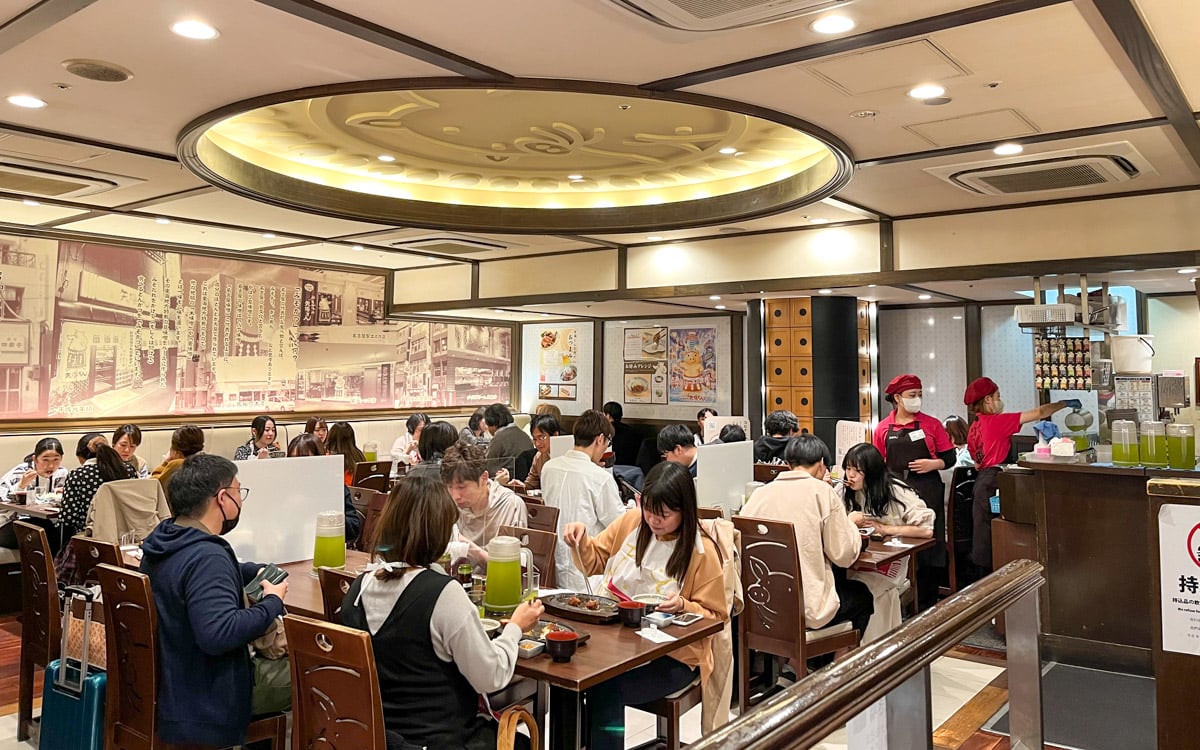
When I stepped inside the restaurant, I was in an open and bright dining room. The room was bustling with diners and packed with tables. Not a single seat remained unoccupied.
I noticed servers dressed in red moving swiftly around the dining room. They were delivering plates of food, pouring miso sauce on top of pork cutlets, and serving drinks. Though busy, the servers were well-coordinated and knew how to handle the rush of people.
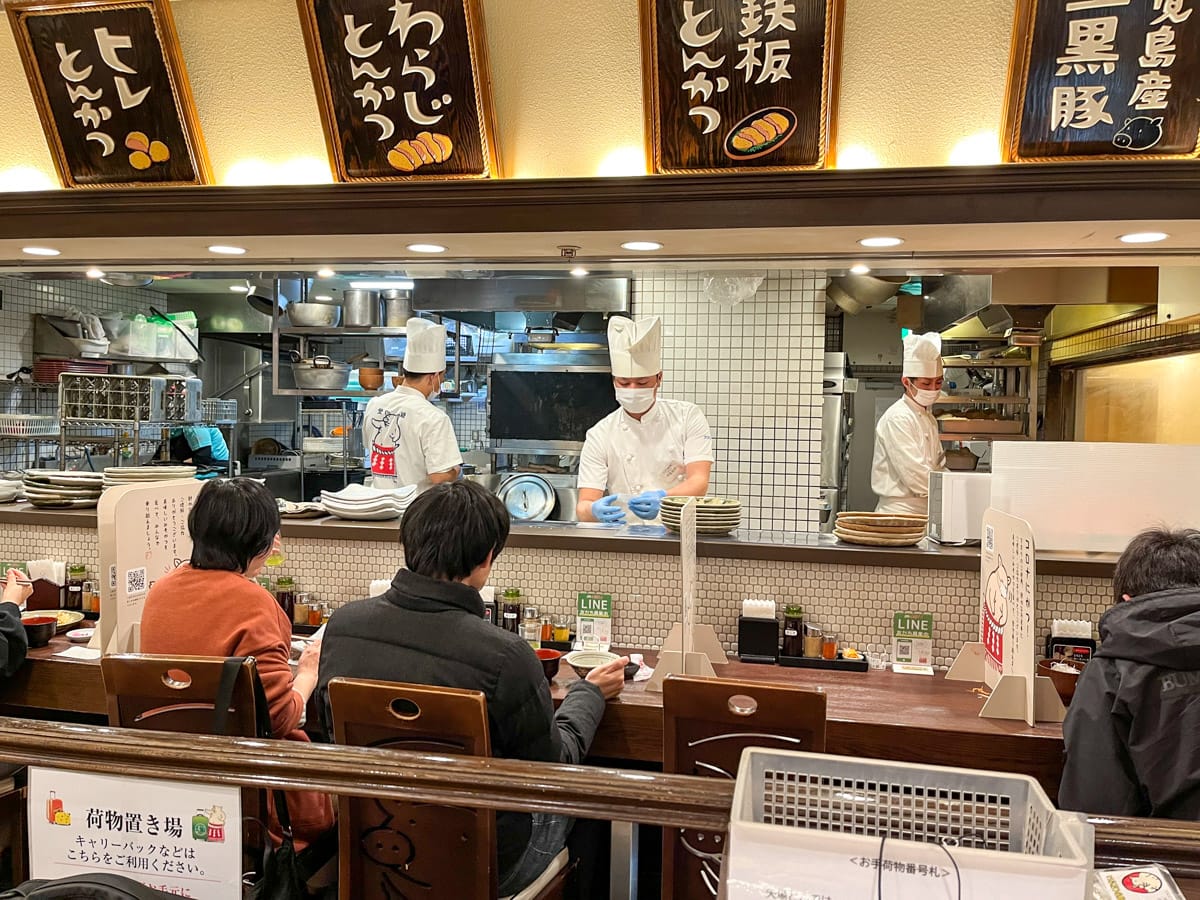
Located on the right side of the dining room was a compact counter seating area with a few seats. These seats offered patrons a glimpse into the lively kitchen.
I enjoyed sitting at the counter because I had a clear kitchen view. I could observe the chefs at work as they fried pork cutlets and prepared plates of food.
Misokatsu Yabaton Menu
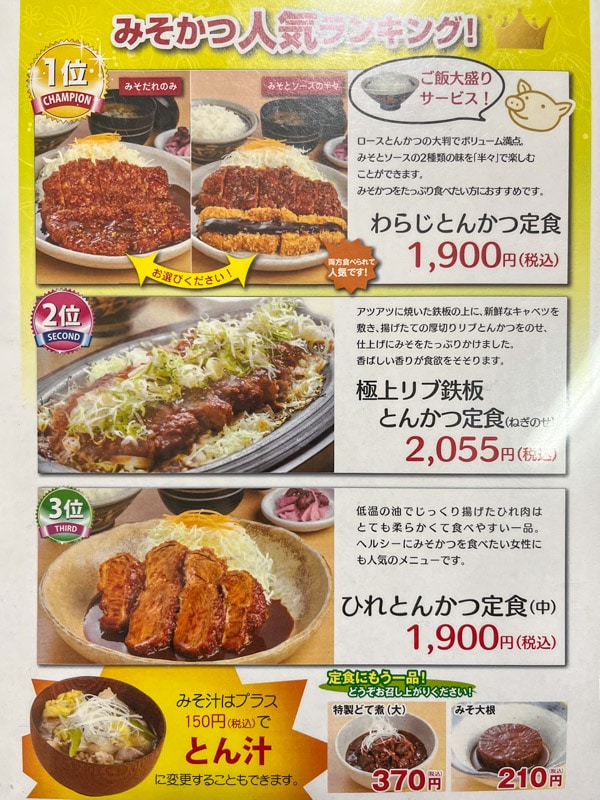
As I mentioned earlier, while waiting in line for the restaurant to open, a friendly staff member approached me and handed me a menu. Noticing that I was not Japanese, he offered me an English menu. But I declined as I already knew what I wanted to order.
While there were many options on the Misokatsu Yabaton menu, my attention was on the one-page special menu. This page displayed the top three most popular dishes. As this was my first time visiting, I ordered the most popular item on the menu, the Waraji Tonkatsu Set.
Waraji Tonkatsu Set
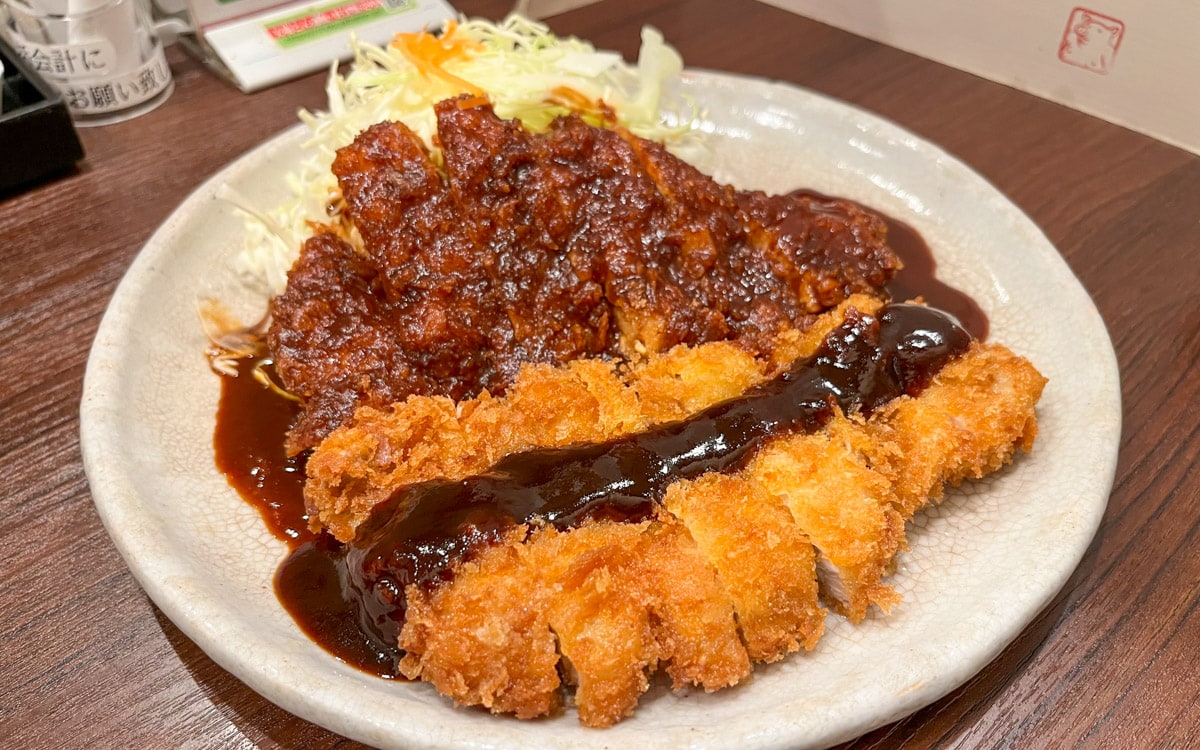
As previously mentioned, I ordered the most popular item on the menu, the Waraji Tonkatsu Set (1900 yen or about $13.40). This set came with two pork cutlets, sliced cabbage, rice, miso soup, pickled vegetables, and green tea.
When placing my order, I had the option of either red miso or tonkatsu sauce. I wanted to try both sauces since the set came with two pork cutlets. Therefore, I ordered one cutlet with red miso sauce and the other with tonkatsu sauce. Additionally, if you prefer one over the other, you can choose to order your dish with only red miso sauce or tonkatsu sauce.
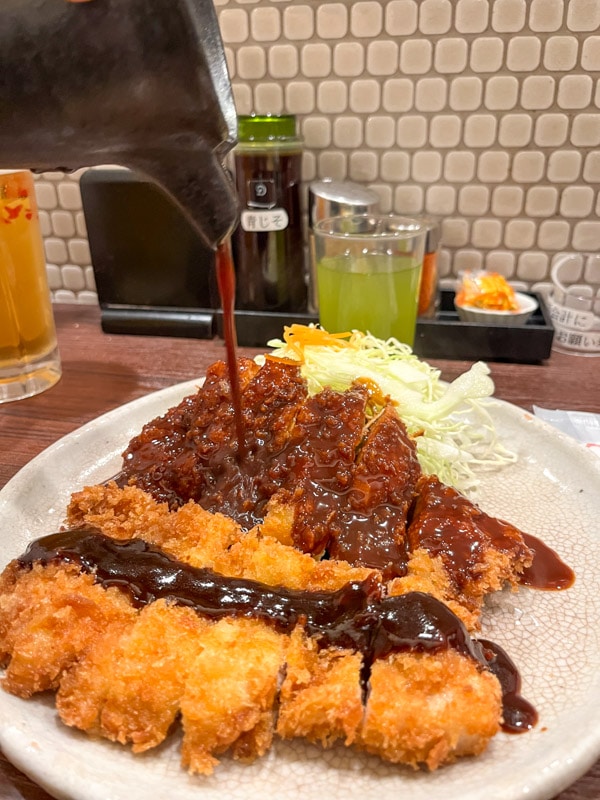
When my plate arrived at my table, a few things caught my attention. First, I couldn’t believe how fast the food arrived at my table. Second, one of the cutlets had tonkatsu sauce all over it, while the other cutlet remained plain. Finally, I wondered how I would eat two pork cutlets by myself.
Out of nowhere, a friendly server approached my table, carrying a container in her hands. She proceeded to pour a generous amount of red miso sauce all over the plain cutlet. The sauce covering the cutlet, which was glistening under the lights, was a beautiful sight.
I learned that the red miso (soybean paste) used at Misokatsu Yabaton underwent a traditional aging process using a cask layered with stones to form a pyramid-like structure.
Over time, the miso matures, and its flavor deepens, intensifying its richness and releasing a sweet aroma. After the completion of the aging, the miso sauce simmers with pork and other spices.
I could tell a lot of love went into preparing the red miso sauce. While simple, the sauce exhibited a delightful umami flavor, combining richness and saltiness.
On the other hand, the traditional tonkatsu sauce was saltier, thicker, and not as refined as the miso sauce. But I did appreciate the complementing flavors of the miso sauce and tonkatsu sauce.
As for the pork cutlet, its breading was golden brown in color and crispy in texture. Its flavor was rich, which is common with fried foods in Japan. The breading did not become soggy or fall apart, even covered in miso sauce.
I found each piece of pork leaner than others, but it wasn’t dry. There was the perfect amount of fatty, rich goodness in each bite.
Accompanying the miso katsu was miso soup, rice, pickled vegetables, and green tea. I enjoyed how the refreshing miso soup complemented the salty, rich miso katsu.
When I first saw the brightly colored green drink, I didn’t know what to think. I was wondering if it was green tea or something else. Its color didn’t resemble your usual Japanese green tea.
However, after trying it, I found it tasted like regular green tea. As with the miso soup, I found the subtle bitterness of the tea to complement the richness of the pork cutlet and sauces.
Also brightly colored were the pickled vegetables. I don’t know what type of vegetables they used, but I found the orange vegetables to be tender and sweet, while the pink vegetables were crunchy and salty.
Service
During my recent visit to Misokatsu Yabaton, I found the service to be quick and efficient. This level of service is something I have come to expect in Japan, and it is one of the reasons I enjoy visiting the country so much.
The prompt service and ordering beforehand meant I could immediately get my food, which helped the line outside move quickly.
After receiving my food, my interaction with the servers was limited, allowing me to enjoy my delicious meal.
When I was done, I proceeded to pay at the front. I found the cashier to be friendly and she had a smile on her face. She even offered me a small gift of a Japanese beer coaster, a kind and thoughtful gesture.
Conclusion
While Nagoya may not be as popular as Tokyo, Osaka, or Kyoto, its cuisine is a hidden gem that people are sadly missing out on. From Nagoya-style fried chicken (tebasaki) and grilled eel (hitsumabushi), Nagoya’s culinary offerings deserve more recognition and conversation.
While tonkatsu remains a personal favorite of mine, the discovery of miso katsu has given it some serious competition. The pork, crispy on the outside and moist inside, drenched in flavorful red miso sauce, left a lasting impression on me.
With a six-decade history, Misokatsu Yabaton has earned a loyal and sizable customer base, cementing its reputation as serving the best miso katsu in Nagoya.
Although you may encounter a line during your visit, the experience of trying miso katsu at Misokatsu Yabaton is undoubtedly worth it.
Pros
- The best miso katsu in Nagoya
- Cask aged red miso sauce
- Large portions
- Friendly and efficient servers
- Clean, bright, and modern interior
Cons
- Often a line
Address & Contact
1-2-1 Meieki Nakamuraku Meitetsu Department Store Honten 9F, Nagoya 450-0002 Aichi Prefecture
GPS Coordinates: 35.16950,136.88393
Hours
Monday-Sunday: 11:00AM-10:00PM
Map
Website
Last Updated on September 19, 2024
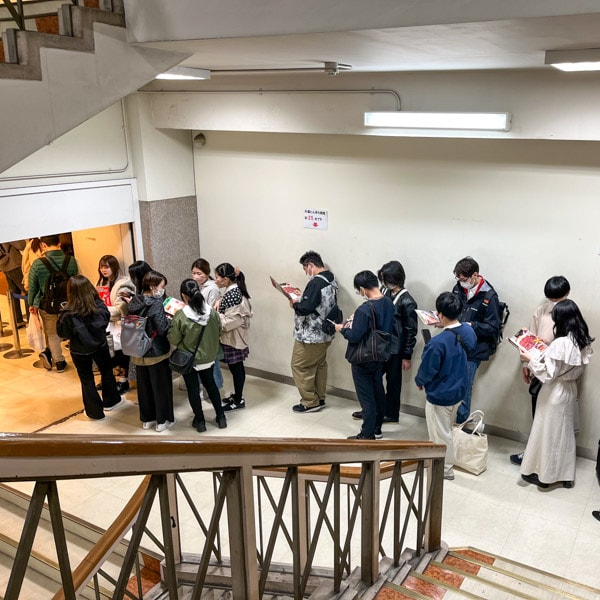
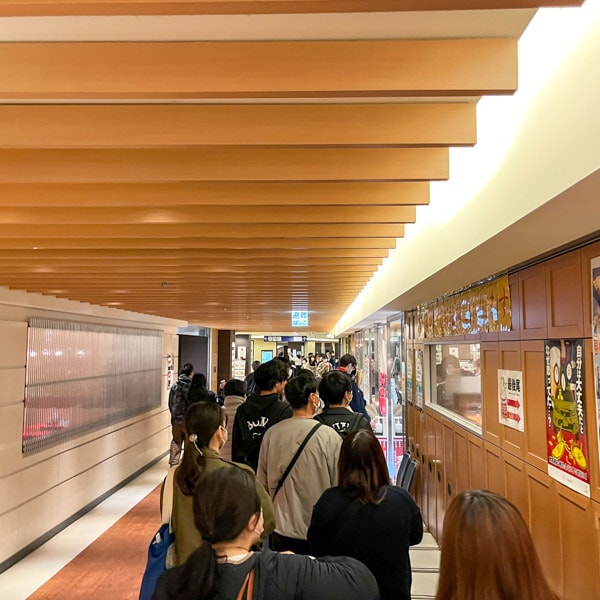
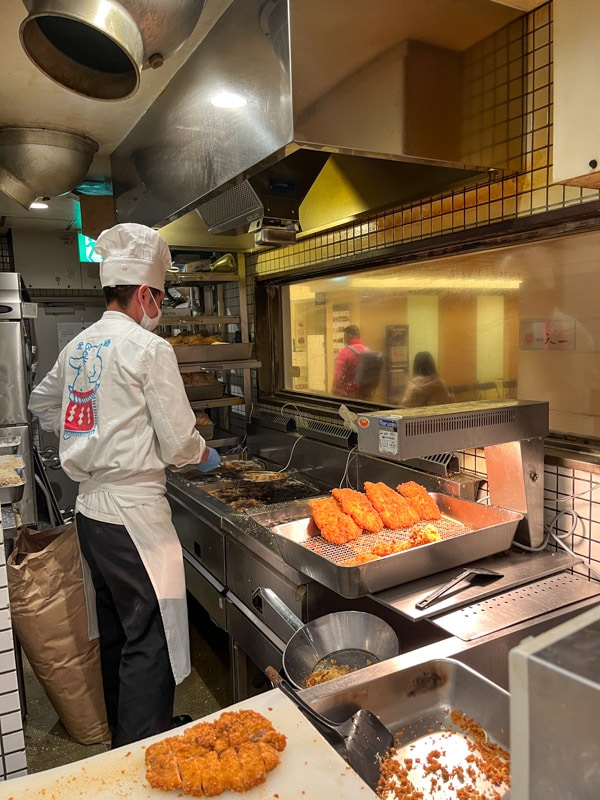
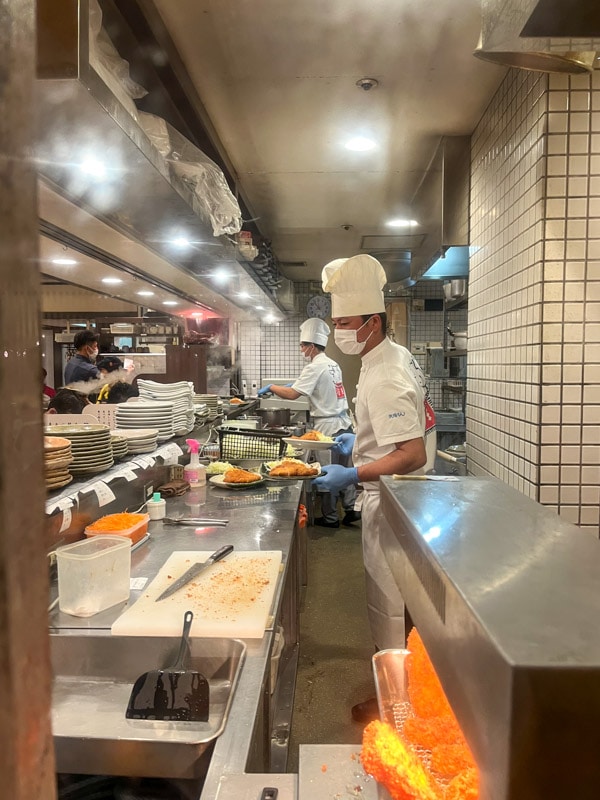
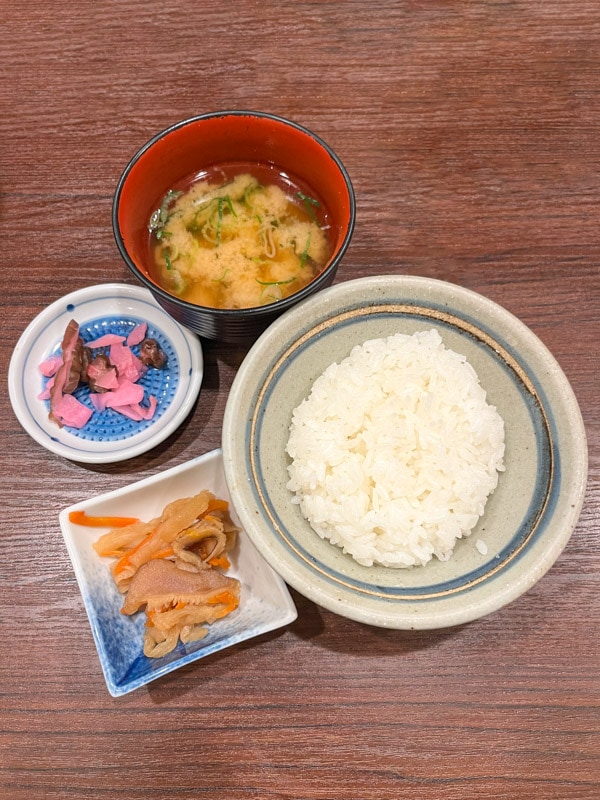
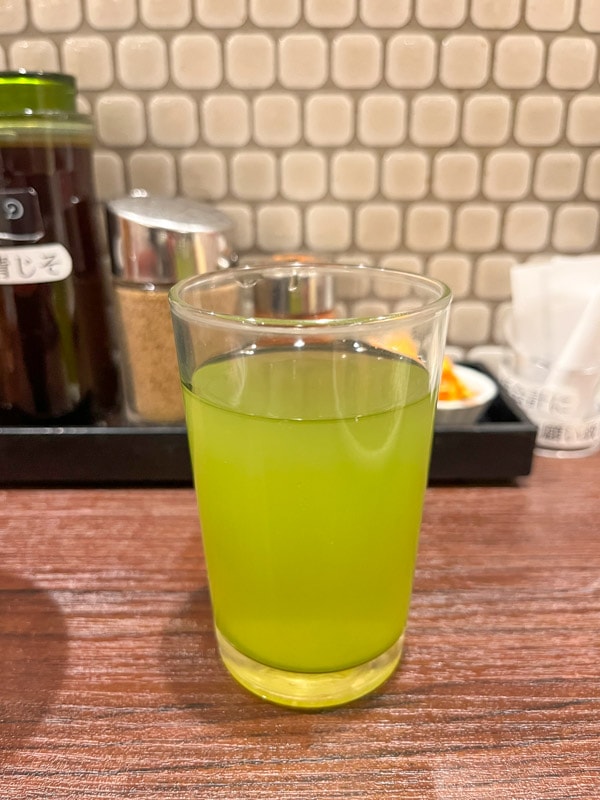
Related Posts